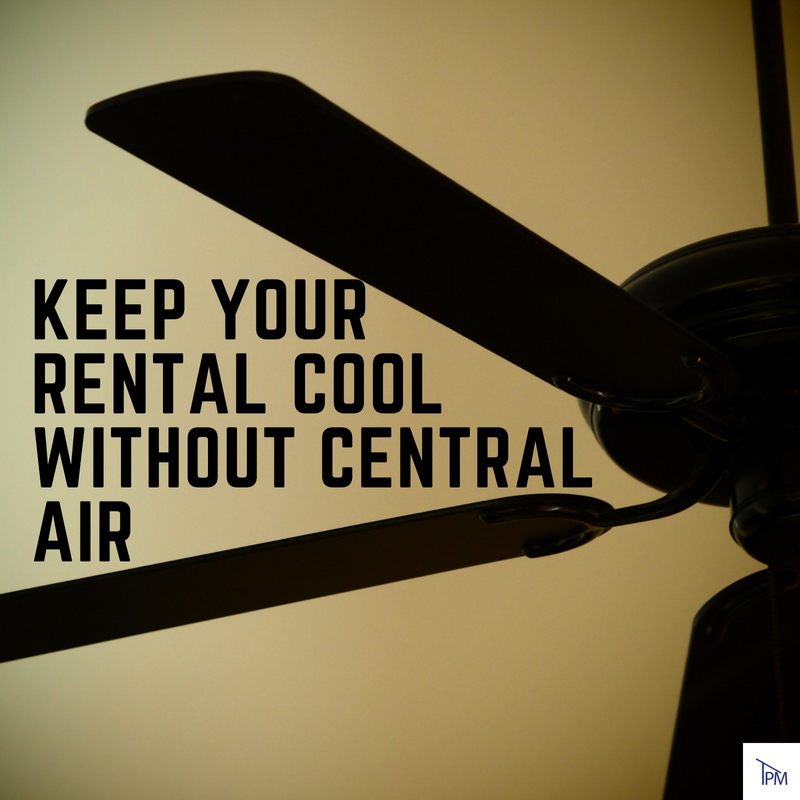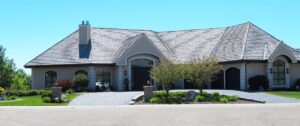Ways to Cool Your Rental without Air Conditioning
Although the summers are relatively mild here in Colorado, there are some steps that you can take to ensure that your rental is a comfortable temperature, even on the warmest of days. You may be one to reach for the thermostat on the air conditioner, but if you rent a place without AC or are interested in keeping your home cool without busting the bank, read on!

Active Cooling Options
As the name implies, active cooling options utilize electricity and can be associated with higher electric and water bills, particularly if they are being used around the clock during the peak of summer or if you live in a dry and hot climate. The tradeoff is that they are quite effective at reducing the temperature within your home.
Install A Whole-House Fan
In this active cooling option, the heat in your house is pulled through the attic and escape via roof vents. AC units can be expensive – especially if you don’t really need them except for a few weeks in the summer! The cost of operating a whole-house fan is quite small compared with more traditional air conditioning options, but they can be expensive to purchase, can be noisy, and are not suitable for instances where you need to cool down the home quickly. However, they are a good option that is cost effective to run.
Portable Air Conditioners
Do you find yourself working or relaxing in one room of your home more than other rooms? This can be the case if you are home much of the day. Rather than cooling your whole house, portable air conditioners allow you to cool just the room, instead of the house. While they may be a potential option for your cooling needs, the availability of Energy Star-qualified portable air conditioning units can be quite sparse, and the initial purchase expense is often higher when compared to window units.
Passive Cooling Options
In contrast to active cooling methods for keeping your home comfortable during the warmer months, passive cooling options require little-to-no energy to use.
Landscaping
Although you will most likely break a sweat, if you consider the effect your landscaping choices have on the overall cooling effect within your home during the summer months. According to the Society of American Foresters, landscaping for the purpose of cooling works by blocking the heat and solar radiation from the building, can help to create a cooler climate near the house through evapotranspiration, and can alter the airflow around and through your home. Shading through landscaping choices can help to lower the overall energy demand, resulting in a lower electric bill, and who doesn’t want that?
Change Your Climate with Curtains
While you may think that curtains, drapes, and other interior window treatments are aesthetics, they are much more than that. When selecting your drapery, some of them may indicate that they provide blackout coverage. This is a good option, as the heat from the sun (also known as solar radiation) can contribute to an increase by up to 20% in regard to heat gain, making curtains or other drapery window coverings a great option if you are looking to create a more enjoyable and comfortable inside temperature during the summer months. You can also alter the window openings and open the curtains when the sun is not shining on that side of the house. This may be more of an active cooling option, as you will need to draw and open the curtains, but the energy expended pales in comparison with the amount of money you could potentially be saving off your electric bill this summer. There are even some companies who design cooling curtains, which are curtains that have been developed using a porous triple-layer membrane. Windows and awnings installed outside can also help to reduce the solar radiation that is able to make itself at home inside.
Conclusion
No matter which type of cooling options you elect to incorporate into your home, a little research is always a good thing. Picking either an active or passive cooling system can feel a little overwhelming. We hope that the overview of passive and active cooling options has provided you with a little more knowledge on the topic. Some of the options require regular upkeep and maintenance, which can be challenging, especially if you have a rental property. That is where a property management company can help! Maintenance conducted on a regularly scheduled interval can help to ensure that your home is cool during the heat of summer, as well as help to keep your cooling equipment and/or landscaping in peak performance.



